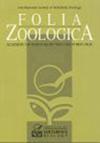Density and spatial partitioning of endangered sympatric Javan leopard (Felidae) and dholes (Canidae) in a tropical forest landscape
Q2 Agricultural and Biological Sciences
引用次数: 21
Abstract
Abstract. This study explores two large carnivores, Javan leopard (Panthera pardus melas) and dhole (Cuon alpinus) that are known to have an overlapping diet and are sympatric in the south-western part of West Java. We characterised their spatiotemporal habitat together with four medium-sized prey species. We used photographs collected along 39.420 night-traps from 108 camera-traps installed on the peninsula of Ujung Kulon National Park (UKNP). We are using maximum entropy modelling (MaxEnt) to investigate seasonal environmental factors. Concerning the dominant prey species, our results showed that distances to secondary forest edge were highly significant for both Javan leopard and dhole in wet and dry seasons. Javan leopard is mostly active at dawn and dusk, whereas spatially correlated with Javan mousedeer and red muntjac. Dhole exhibited diurnal activity and were avoiding Javan leopard to a certain extent. Its spatial use is overlapping with red muntjac, wild boar, and banteng. Using Spatially Explicit Capture-Recapture (SECR) methods, the density estimation for Javan leopard were 10.91 and 11.54 individuals/100 km2 in wet and dry seasons, respectively. We confirmed UKNP as one of Indonesia's biodiversity hotspots and a critical area to preserve Javan leopard and dholes.热带森林景观中濒危同域爪哇豹(Felidae)和洞(Canidae)的密度和空间划分
摘要本研究探讨了两种大型食肉动物,爪哇豹(Panthera pardus melas)和洞(Cuon alpinus),已知它们有重叠的饮食,并在西爪哇西南部同域分布。我们描述了它们的时空栖息地以及四种中等大小的猎物。我们使用了安装在Ujung Kulon国家公园(UKNP)半岛上的108个相机陷阱收集的39.420个夜间陷阱的照片。我们正在使用最大熵模型(MaxEnt)来调查季节性环境因素。结果表明,爪哇豹和洞在干湿季节与次生林边缘的距离均有显著性差异。爪哇豹子主要在黎明和黄昏活动,而与爪哇鼠鹿和赤麂在空间上相关。它们白天活动,对爪哇豹有一定程度的躲避。它的空间使用与红麂、野猪、板藤重叠。利用空间显式捕获-再捕获(SECR)方法估算,爪哇豹在湿季和旱季的密度分别为10.91和11.54只/100 km2。我们确认UKNP是印度尼西亚生物多样性热点地区之一,也是爪哇豹和洞的重要保护区。
本文章由计算机程序翻译,如有差异,请以英文原文为准。
求助全文
约1分钟内获得全文
求助全文
来源期刊

Folia Zoologica
生物-动物学
CiteScore
1.70
自引率
0.00%
发文量
0
审稿时长
3 months
期刊介绍:
Information not localized
 求助内容:
求助内容: 应助结果提醒方式:
应助结果提醒方式:


